22
Dr. Robert G. Ousterhout
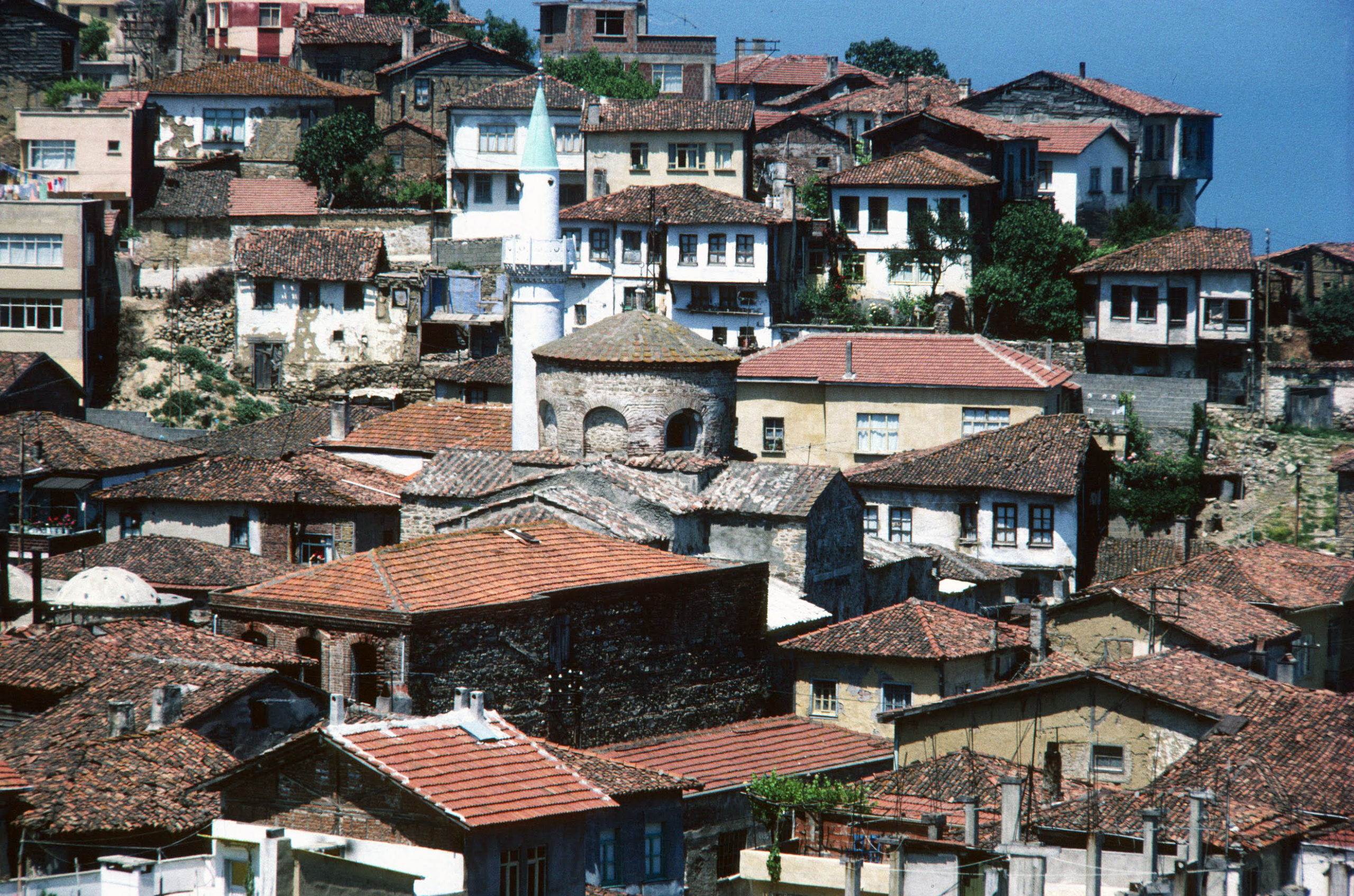
The cross-in-square church
The end of Iconoclasm (the conflict regarding religious images and their removal from churches) and the development of a theology of images (religious justifications for sacred images, or “icons”) had profound effects on church design, in terms of the development of a standardized program of decoration and a concomitant standardized building design, both of which reflected the hierarchy of Orthodox belief. The pyramidal massing of forms, from a tall central dome to high crossing vaults, to lower corner vaults and walls, provides an ideal framework for figural imagery.
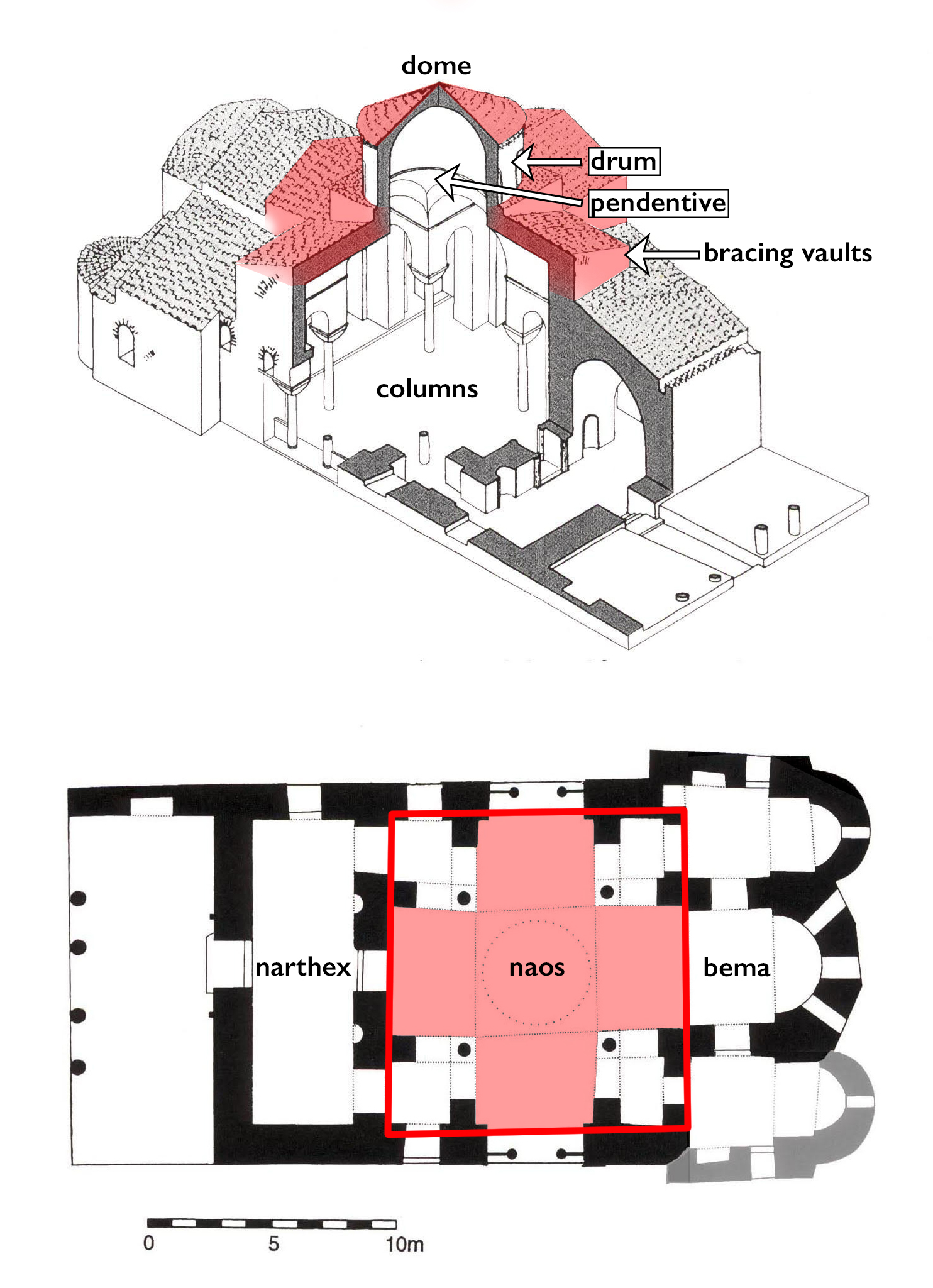
Fatih Mosque, Trilye
First seen in Trilye during the Transitional Period (see above), the cross-in-square emerged as the standard church type following Iconoclasm. These churches have a square naos and a central dome braced on four sides by vaults and supported by four columns or piers, giving the appearance of a cross within a square.
The Myrelaion, Constantinople
The Myrelaion church in Constantinople, built c. 920, achieves a balance between the articulation of the structural system and the coordination of the interior spaces. Forms cascade down from the central dome like a pyramid. Four bracing vaults extend outward in the form of a cross, set within the square of the plan below. Hence the term, “cross-in-square,” which defines this building type spatially, in three dimensions, rather than as a floor plan. Four columns support the dome and subdivide the naos into nine bays. Those in the corners are the lowest, and correspond in height with the narthex and pastophoria—the side chambers in the bema that flank the central altar area.

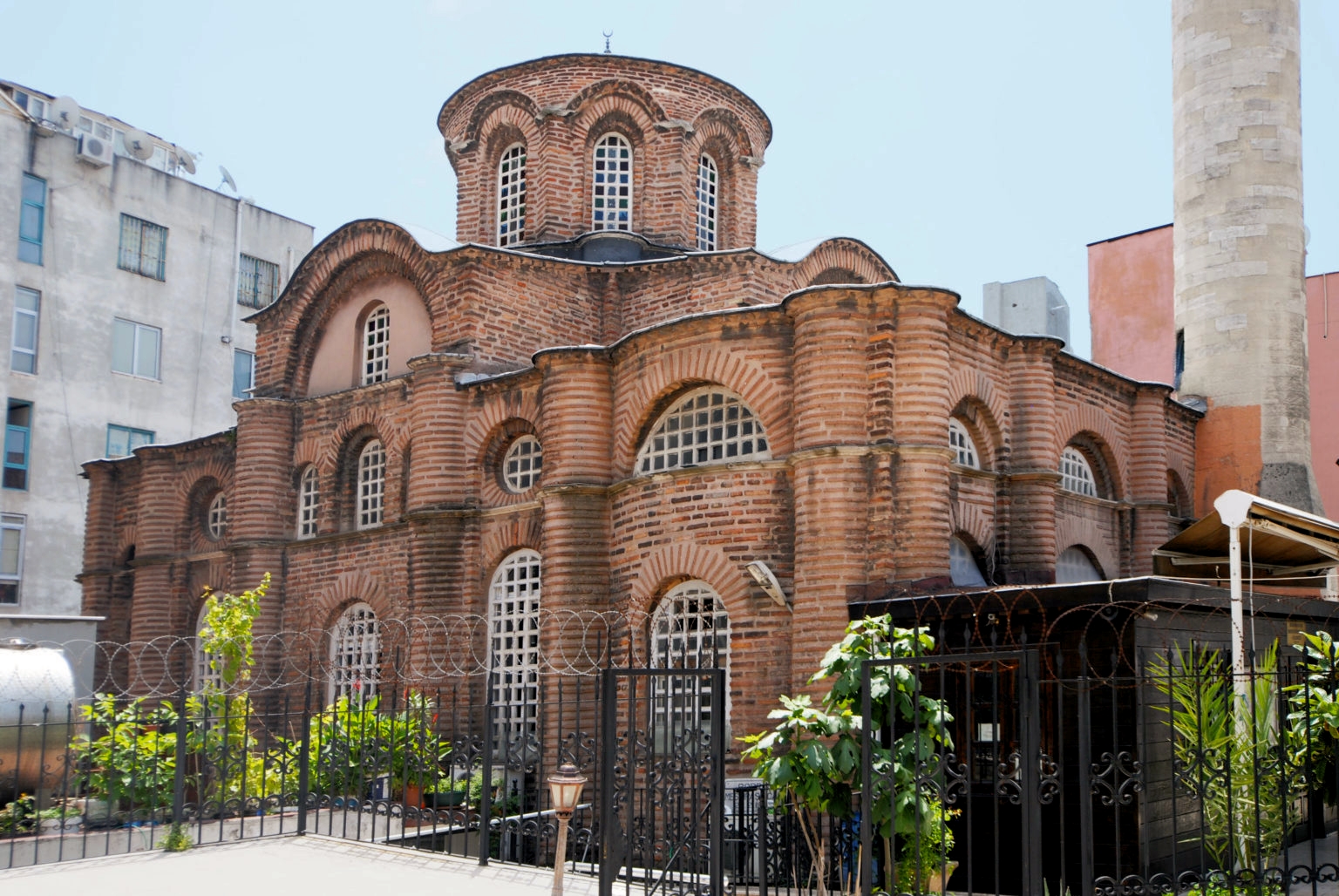
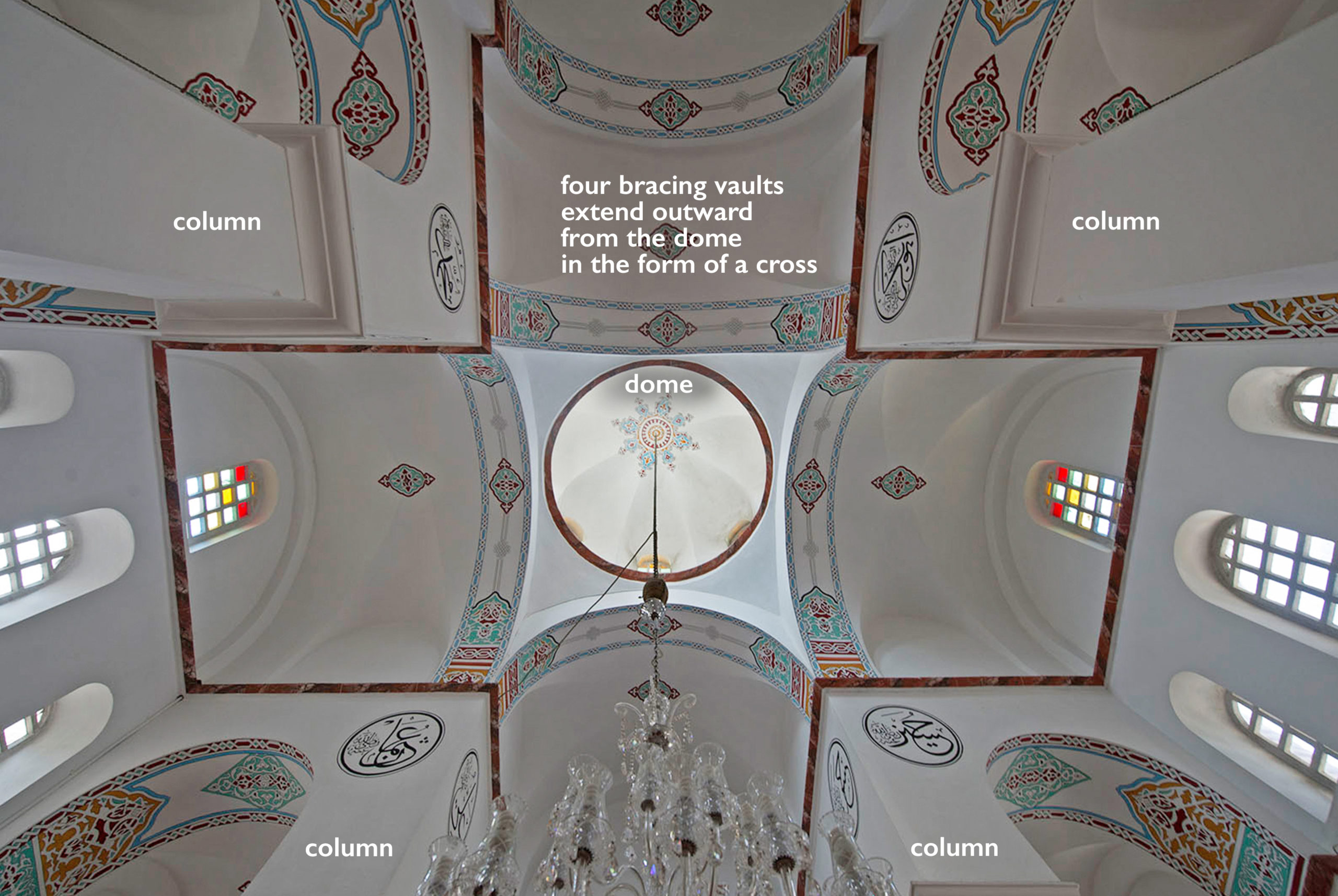
*


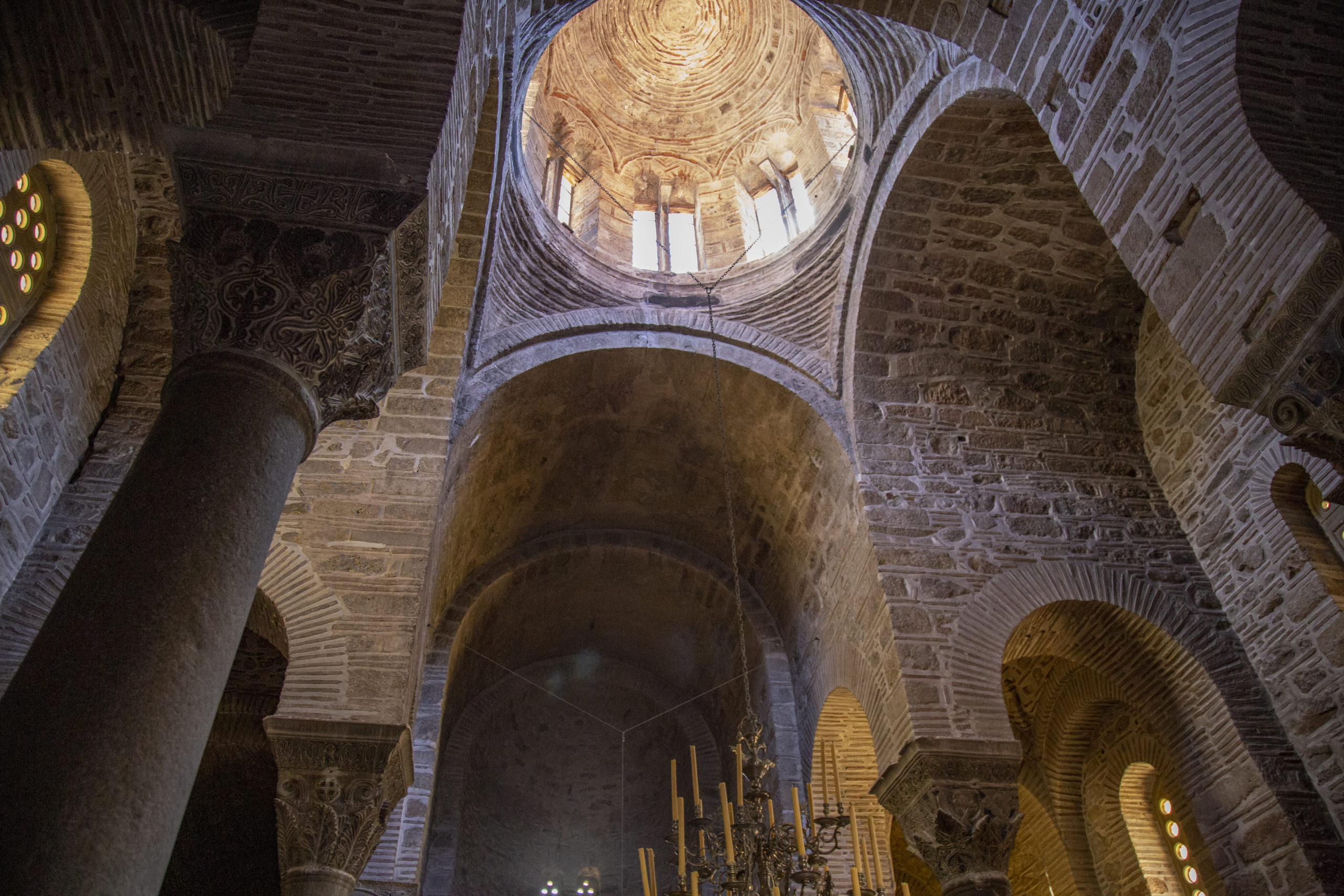
The spread of the cross-in-square
The cross-in-square type is widespread, first appearing in Greece in the late tenth century at the Panagia church at Hosios Loukas monastery. (“Panagia,” which means “all holy,” is a title of the Virgin Mary, the mother of Jesus.) While neither this nor the Myrelaion preserves internal decoration, the Panagia ton Chalkeon in Thessaloniki, dated by inscription to 1026, and the rock-cut Karanlık Kilise at Göreme, dated to the eleventh century, provide evidence of the developed interior cycle.
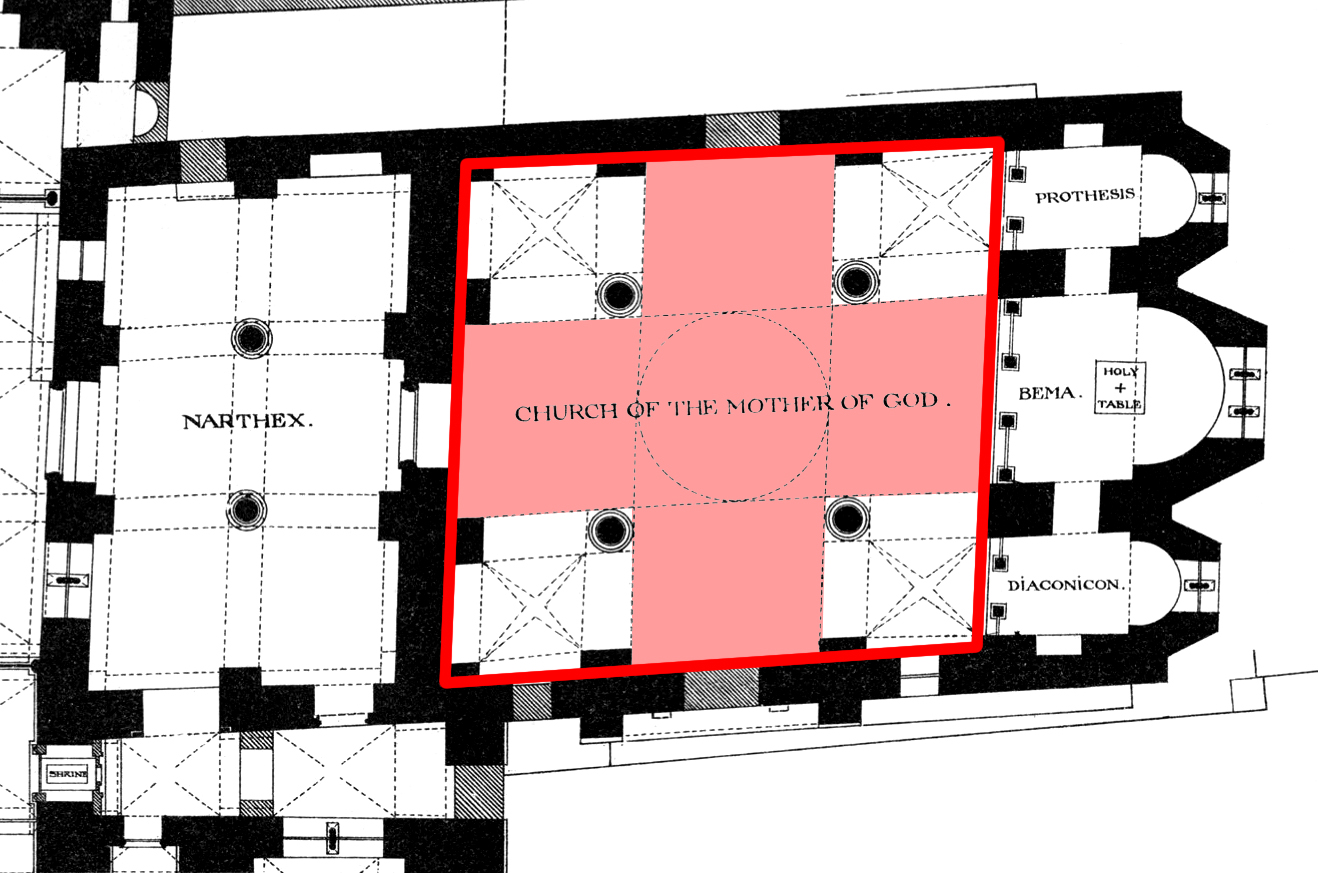
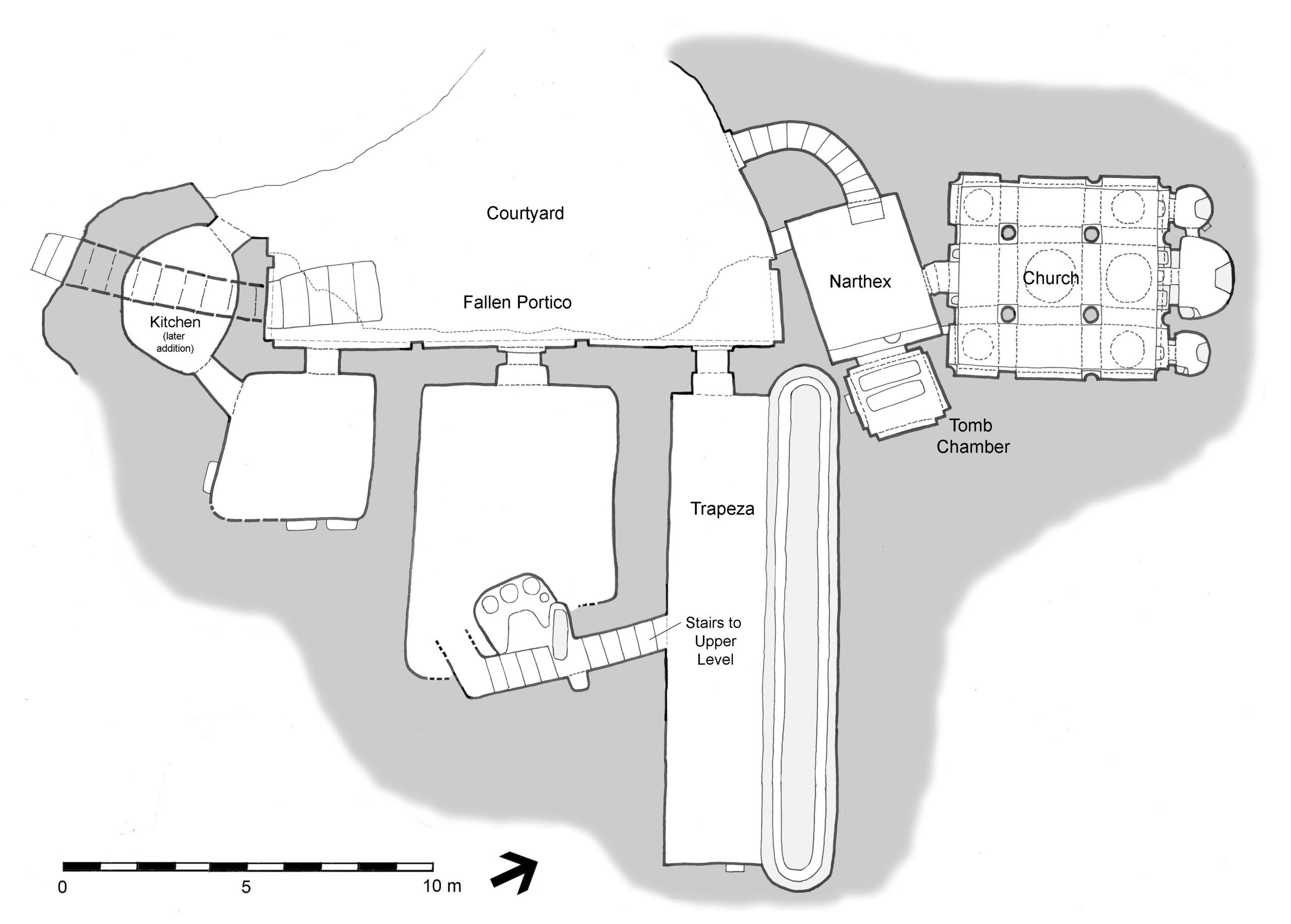
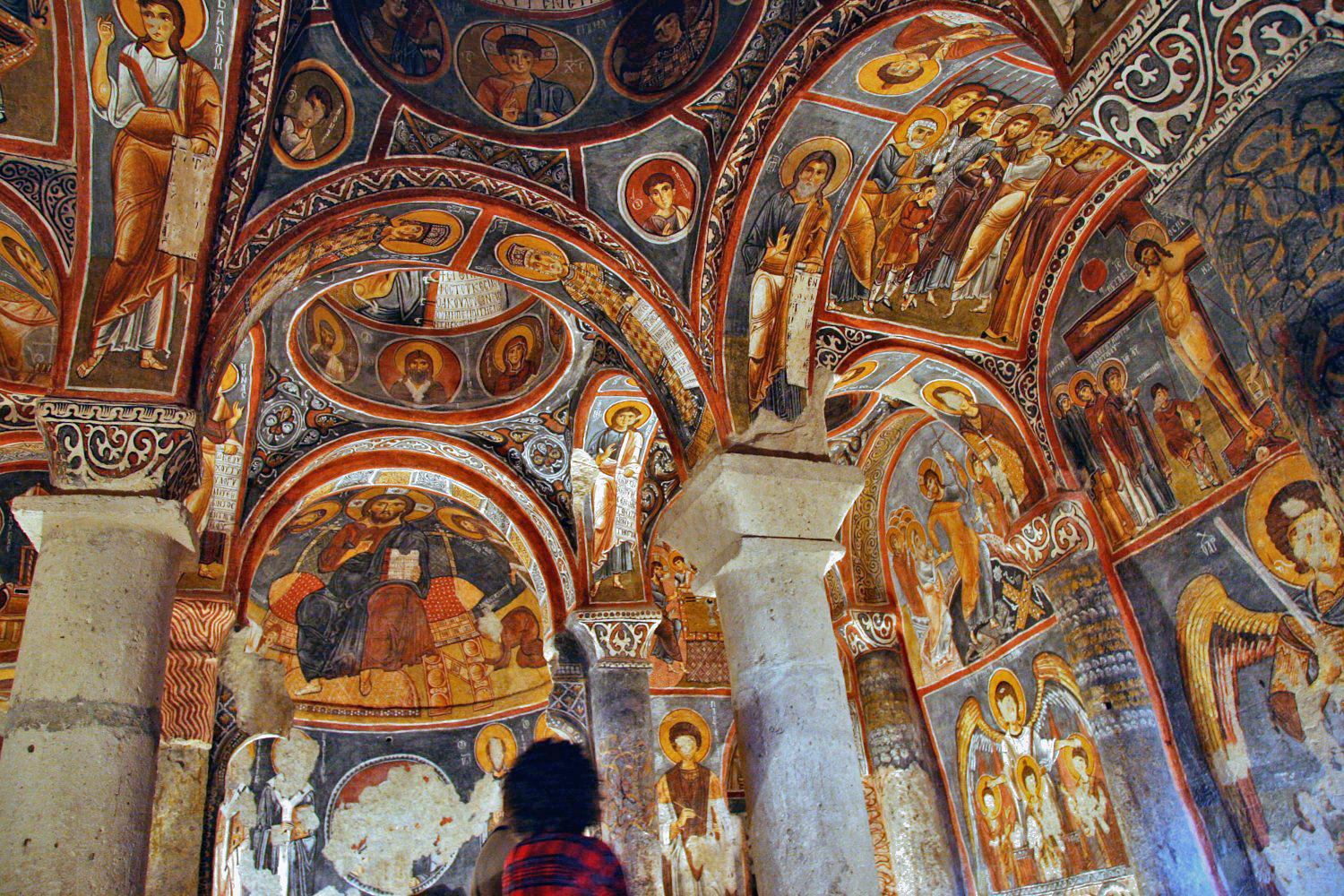
The same building type appeared in central Anatolia (the large peninsula in West Asia that is also known as “Asia Minor”), southern Italy, the Balkans, and Russia, with slight variations, and served a variety of functions, as palatial, domestic, monastic, parish, or funerary churches. The common denominator in all was the small scale appropriate to small groups of worshippers or private use.
The persistence of the basilica
With the revival of the empire beginning in the second half of the ninth century following the tumultuous Transitional Period, new church construction occurred most often as the result of private patronage. Variations in church design abound during the Middle Byzantine period (c. 843–1204): basilicas and domed basilicas continued to appear, notably when larger interior spaces were required, but in some regions, such as Kastoria in northern Greece, small basilicas persist. Occasionally, as with the ruined, three-aisled basilica at Servia and the Old Metropolis at Verroia (both in Northern Greece), there was not a suitable Early Christian basilica to serve as the cathedral, so a basilica was built in the Middle Byzantine period.
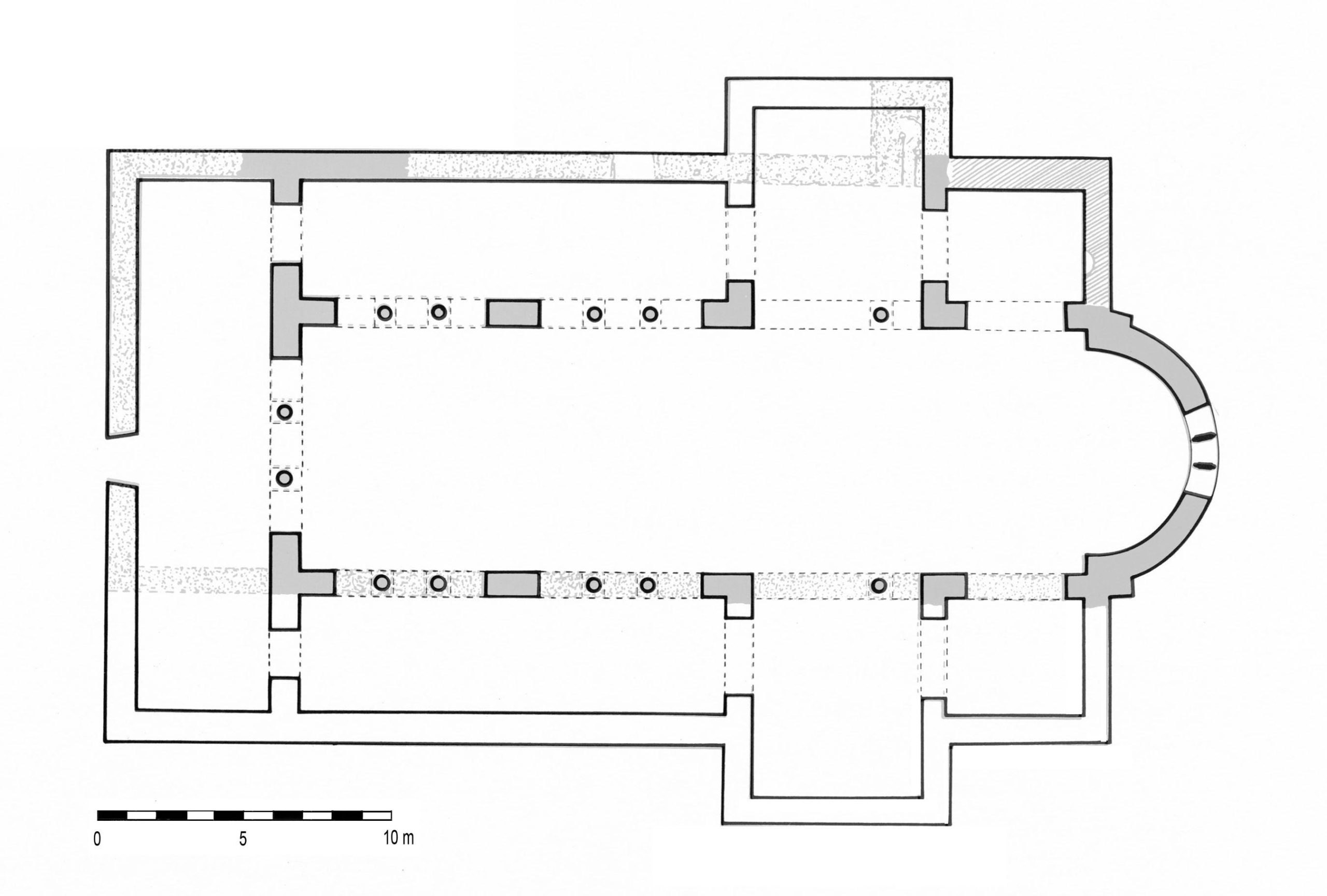

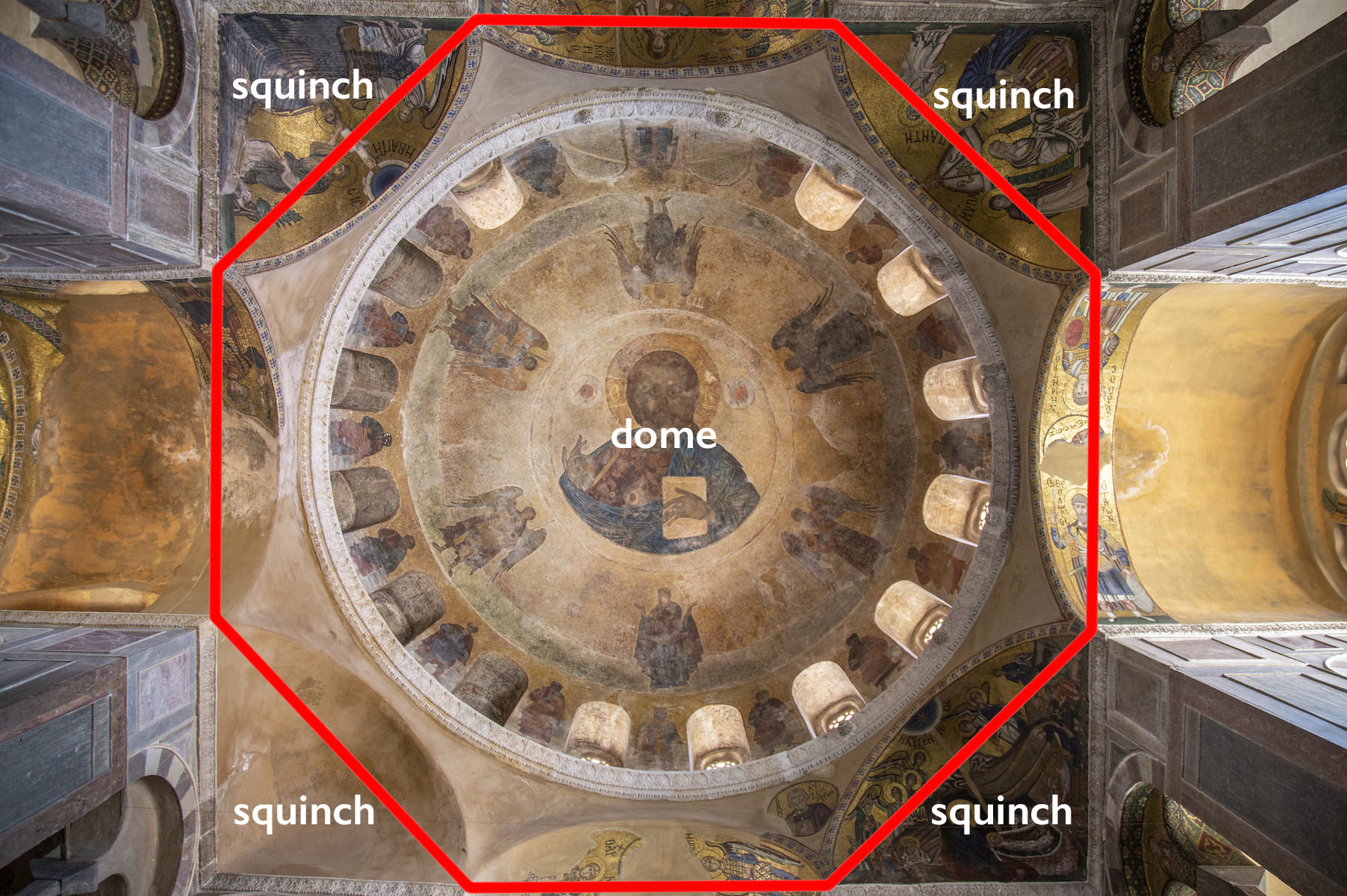
The octagon-domed church
If the limited scale of the cross-in-square church seemed too small or too plain, the octagon-domed church—a centrally planned church with a dome supported above eight points—provided more elaborated interior designs and complex surfaces for mosaic decoration, while providing eight points of support for a larger dome. With architectural elements called squinches providing the transition to the dome, the design may be derived from Arab or Caucasian models. The eleventh-century katholika (“katholikon” is the modern Greek term for the main church in a monastic complex) of Hosios Loukas monastery, of Nea Moni on Chios, and the destroyed church of H. Georgios ton Manganon in Constantinople suggest the degree of variations possible.
The katholikon church at Hosios Loukas
At Hosios Loukas, the tall naos is extended by transept arms and is enveloped by galleries and annexed chapels on two levels; the hemispherical dome rises above squinches. Lavishly decorated with marble and mosaic, the circumstances of its construction remain unclear.
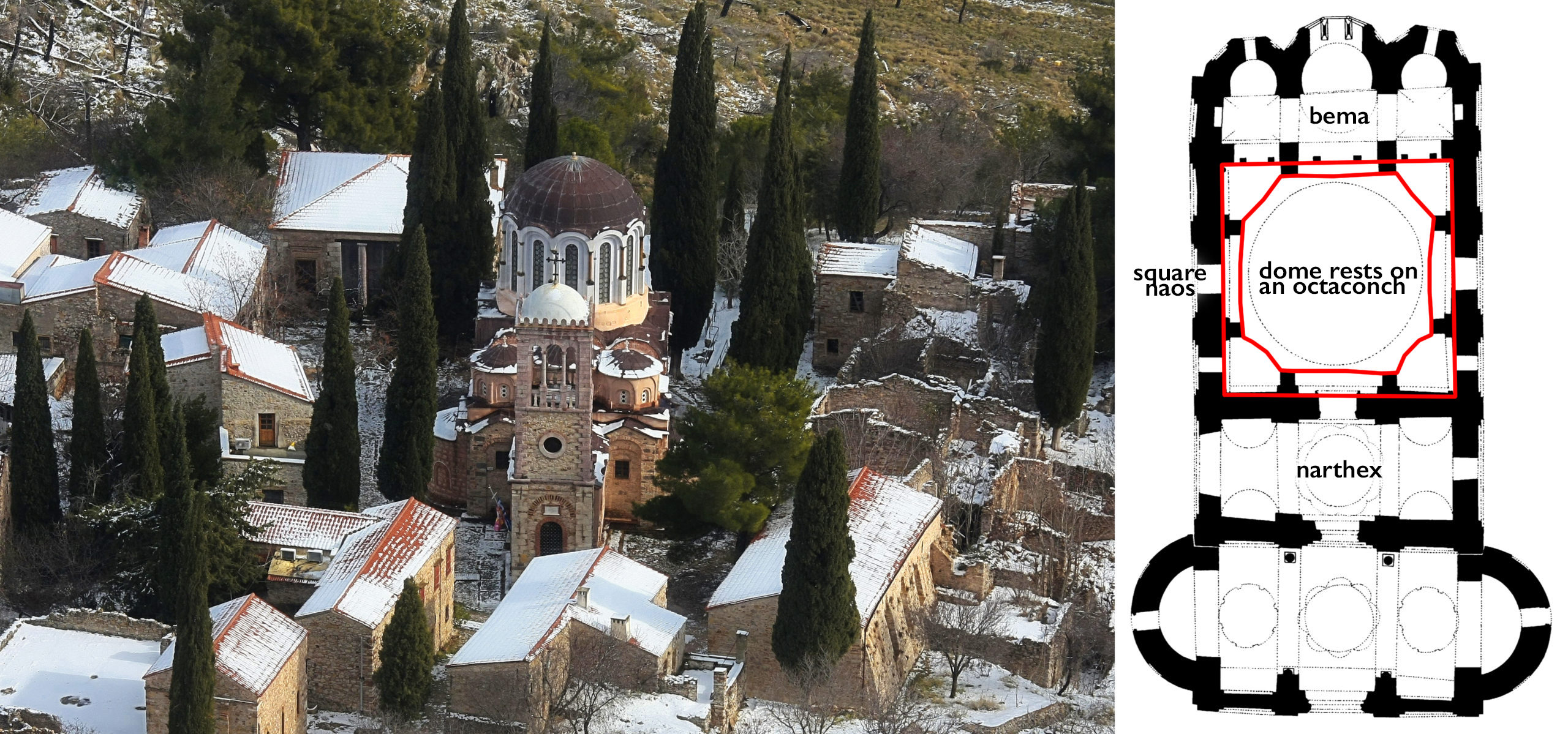
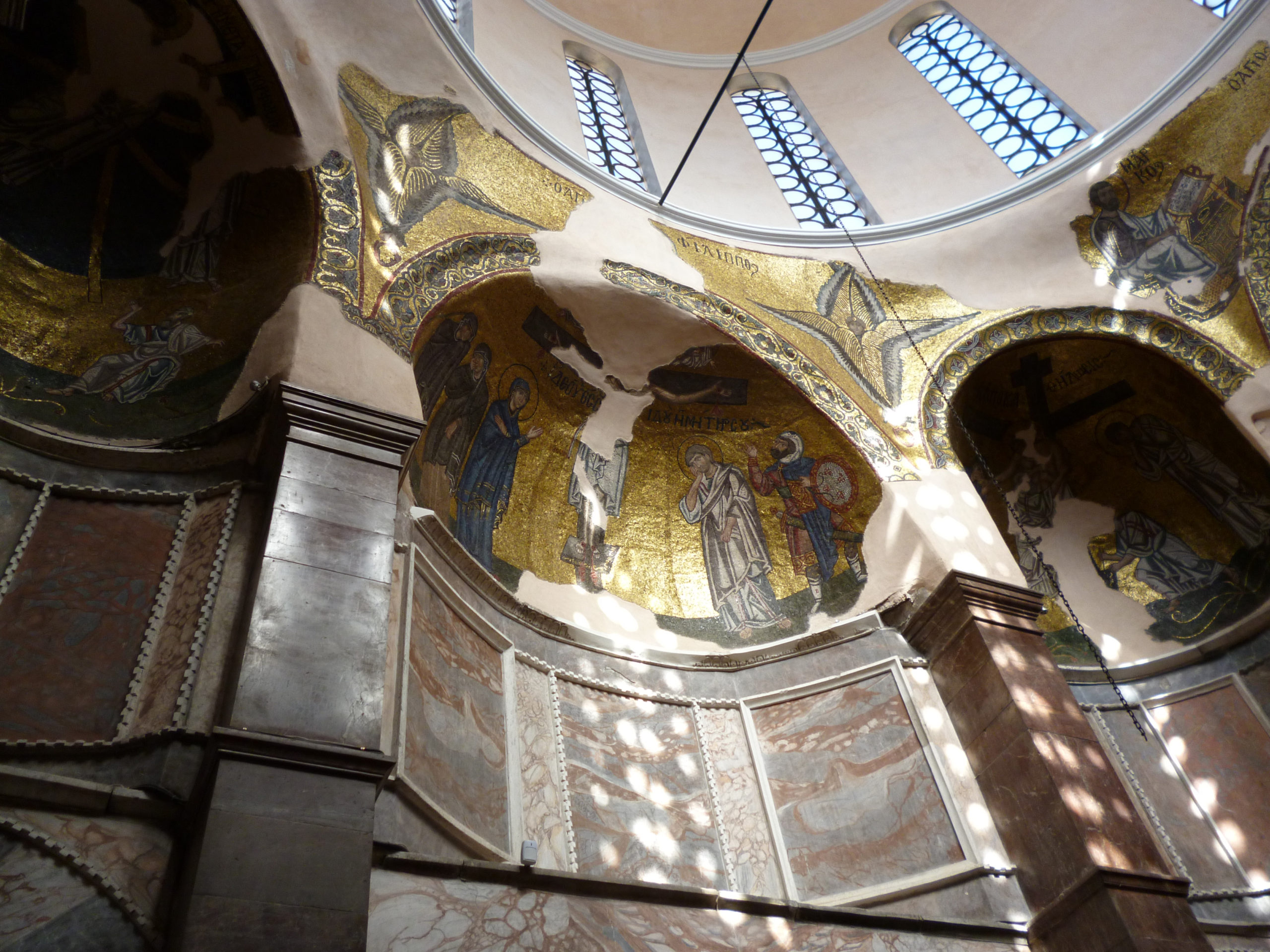
Nea Moni on the island of Chios
At Nea Moni (“new monastery”) on the Greek island of Chios, the footprint of a cross-in-square church is maintained, along with low vaults to the tripartite sanctuary (bema) and narthex, while the naos appears tower-like, its dome originally nine-sided, rising above a tall drum and an octaconch at the transitional level. The unusual design and lavish decoration with marbles and mosaics may be the result of imperial patronage by Constantine IX Monomachos (reigned 1042–55) and the work of artisans from Constantinople.
H. Georgios ton Manganon in Constantinople
Also attributed to the patronage of Monomachos—and also lavishly decorated—the church of H. Georgios ton Manganon in Constantinople (now destroyed) seems to have had an octagon-domed design, with the dome raised above reentrant piers that curved at the corners of the naos, which was enveloped by an ambulatory. Known from descriptions and limited excavations, however, details of its elevation remain uncertain.
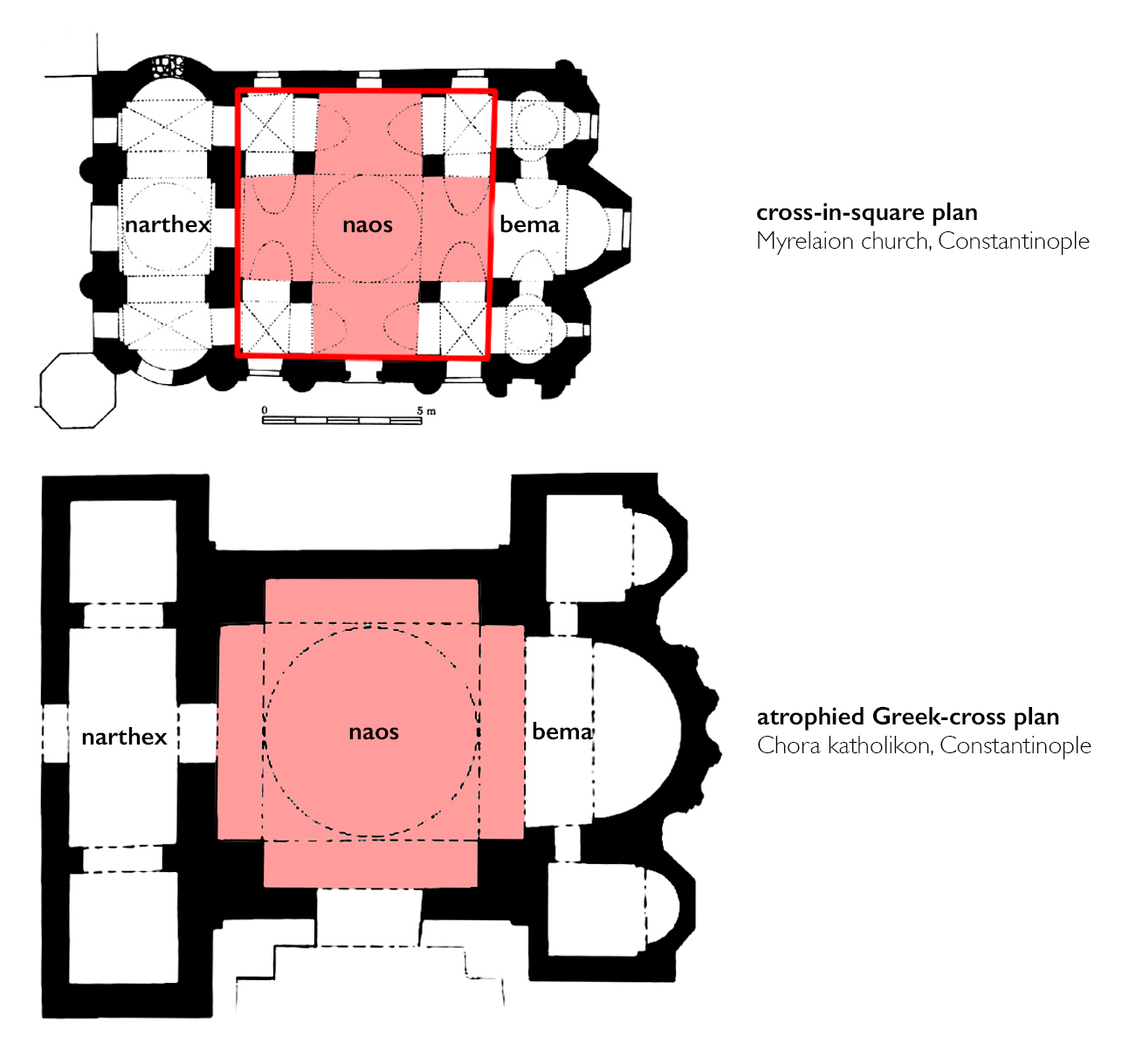
The atrophied Greek-cross and other plans
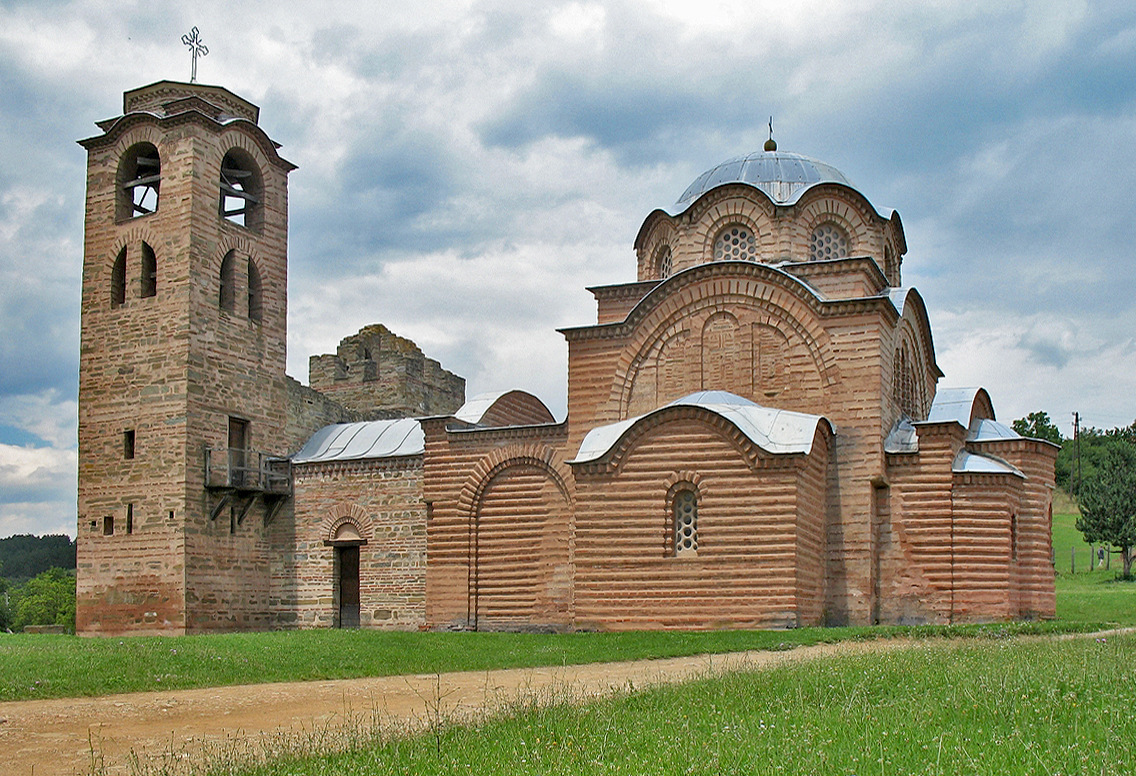

Domed basilicas also reappear in the same period, as at the Fatih Camii at Enez (above) or the Gül Mosque in Constantinople. Ambulatory-planned churches—such as the twelfth-century Theotokos Pammakaristos in Constantinople, which has a central space enveloped by a curved aisle or ambulatory (see plan below)—may have been intended to provide additional spaces for burial in close proximity to the naos.

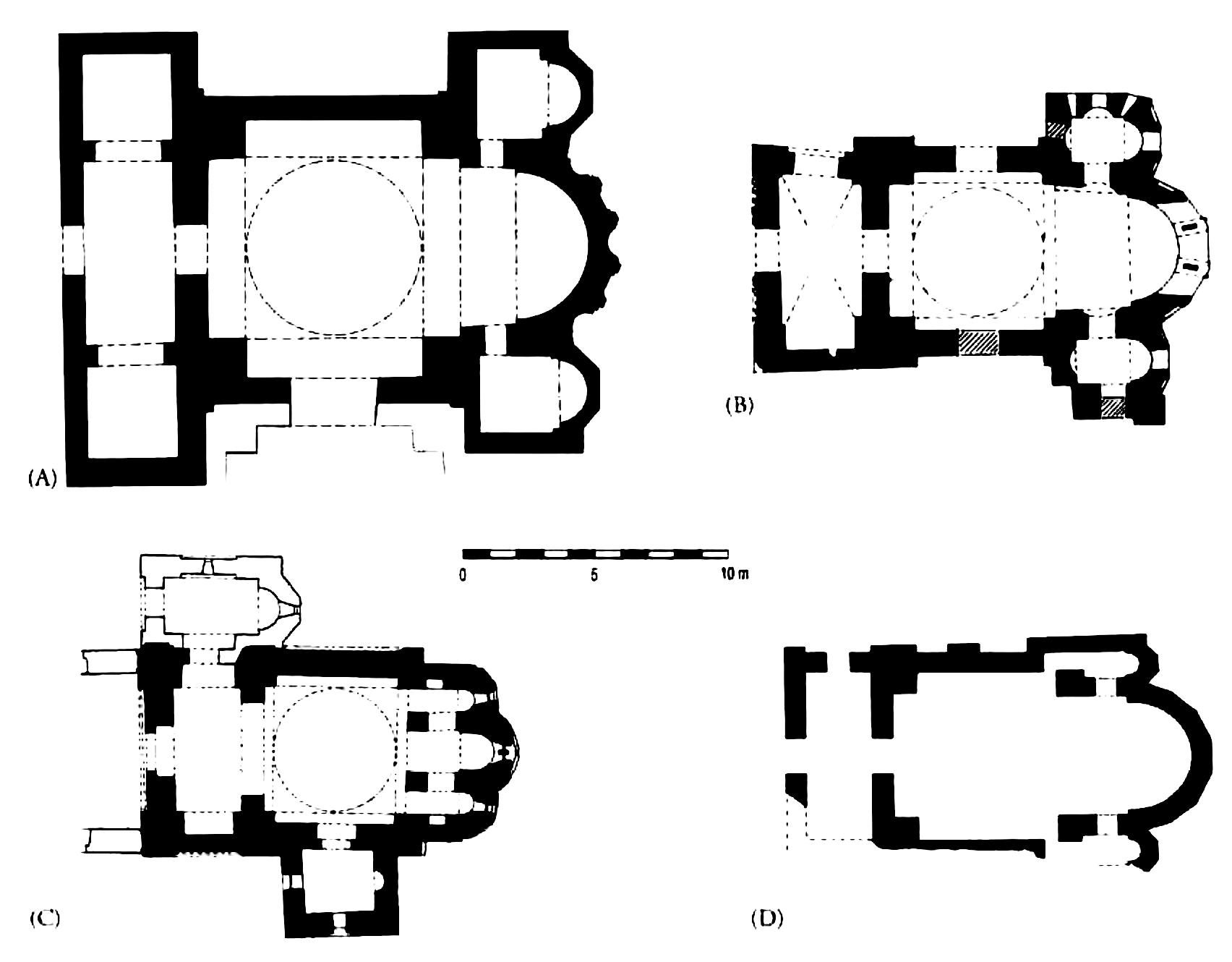
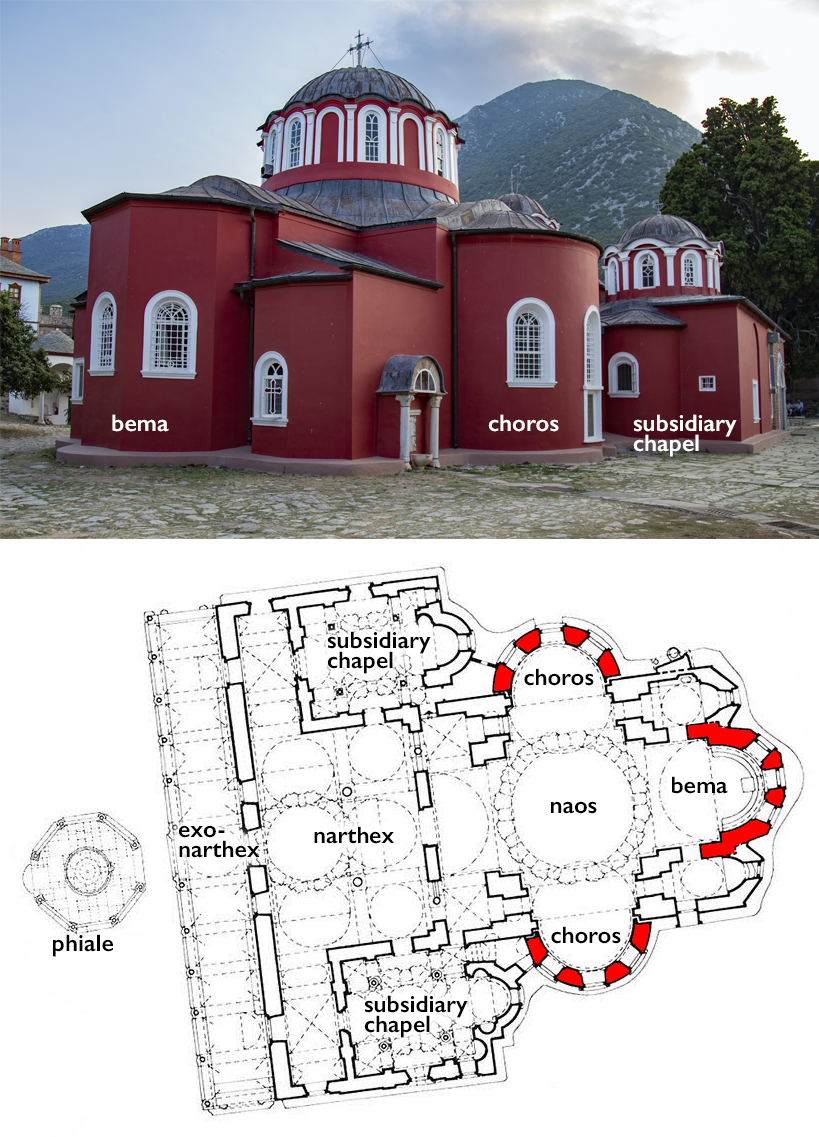
*
Triconch churches
The katholikon at Megisti Lavra on Mount Athos
It is unclear if the new church type emerged by means of later additions or modifications, but the new feature clearly responded to the requirements of the monastic service. At Megisti Lavra, the katholikon begun in 962 was expanded gradually, with the addition of lateral apses to the naos, domed subsidiary chapels flanking the narthex, an outer narthex, and a phiale (font). At Vatopedi and elsewhere on Mount Athos, the katholika appear to have triconch plans from the inception.
*
*
*
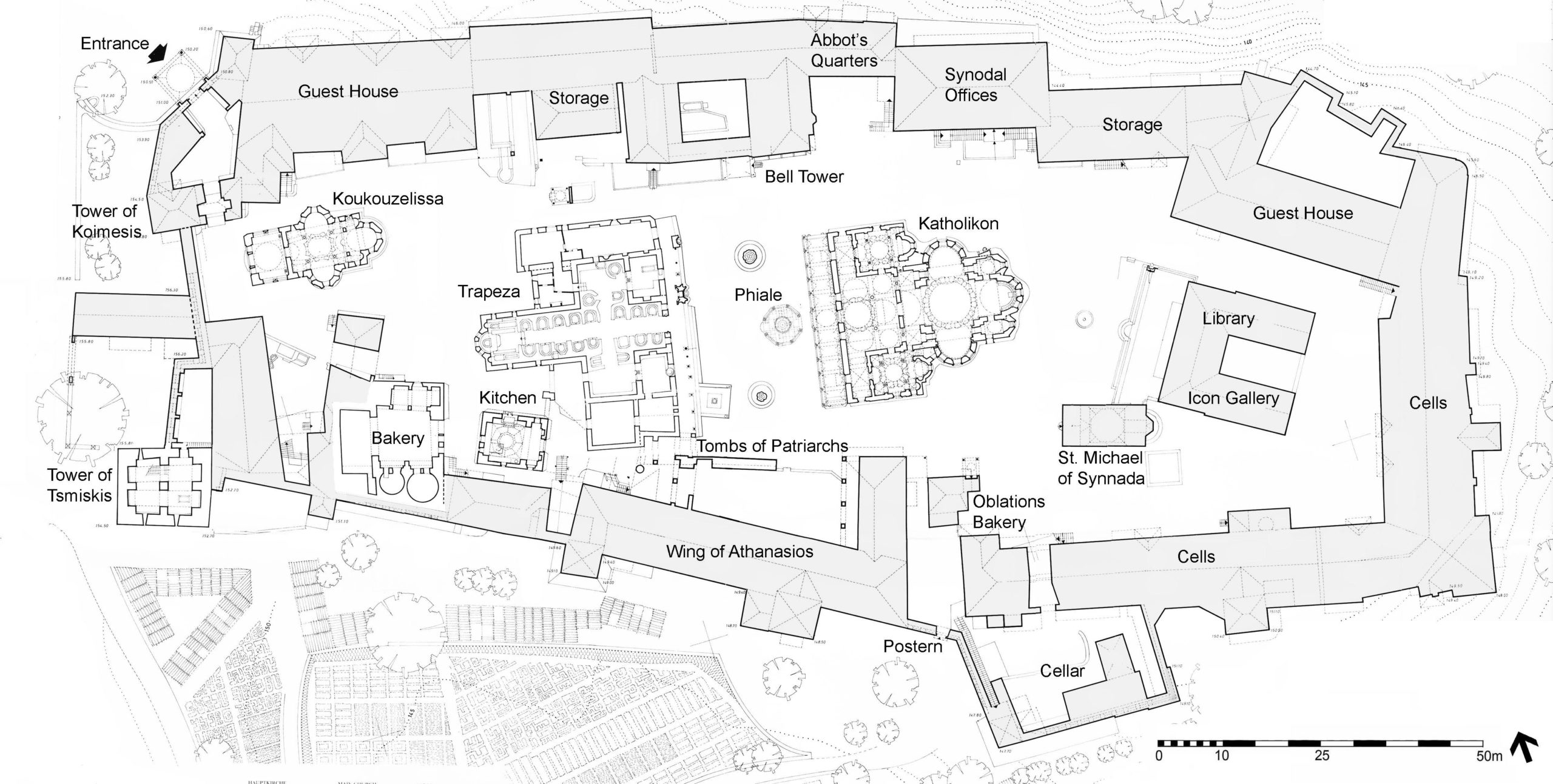
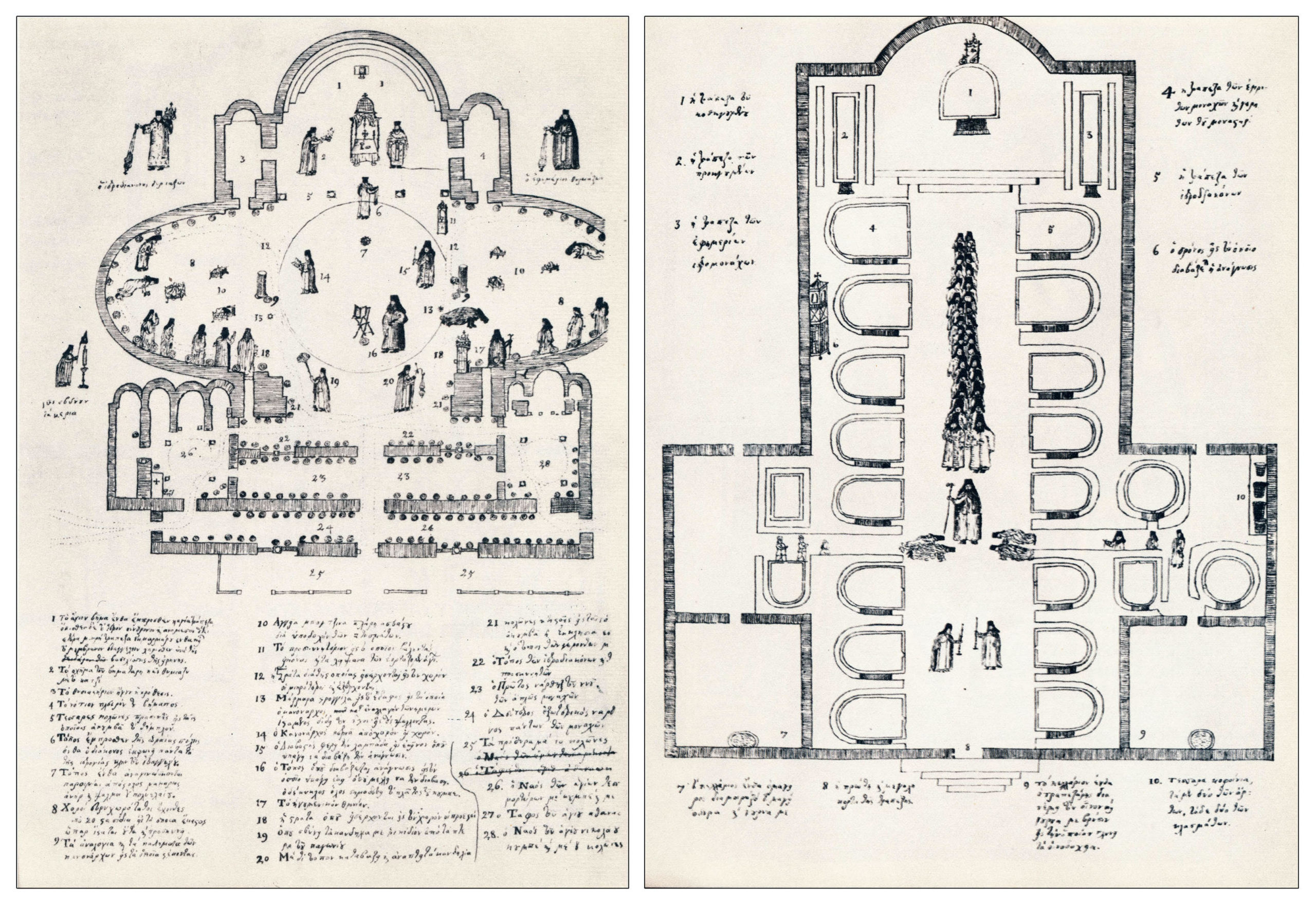
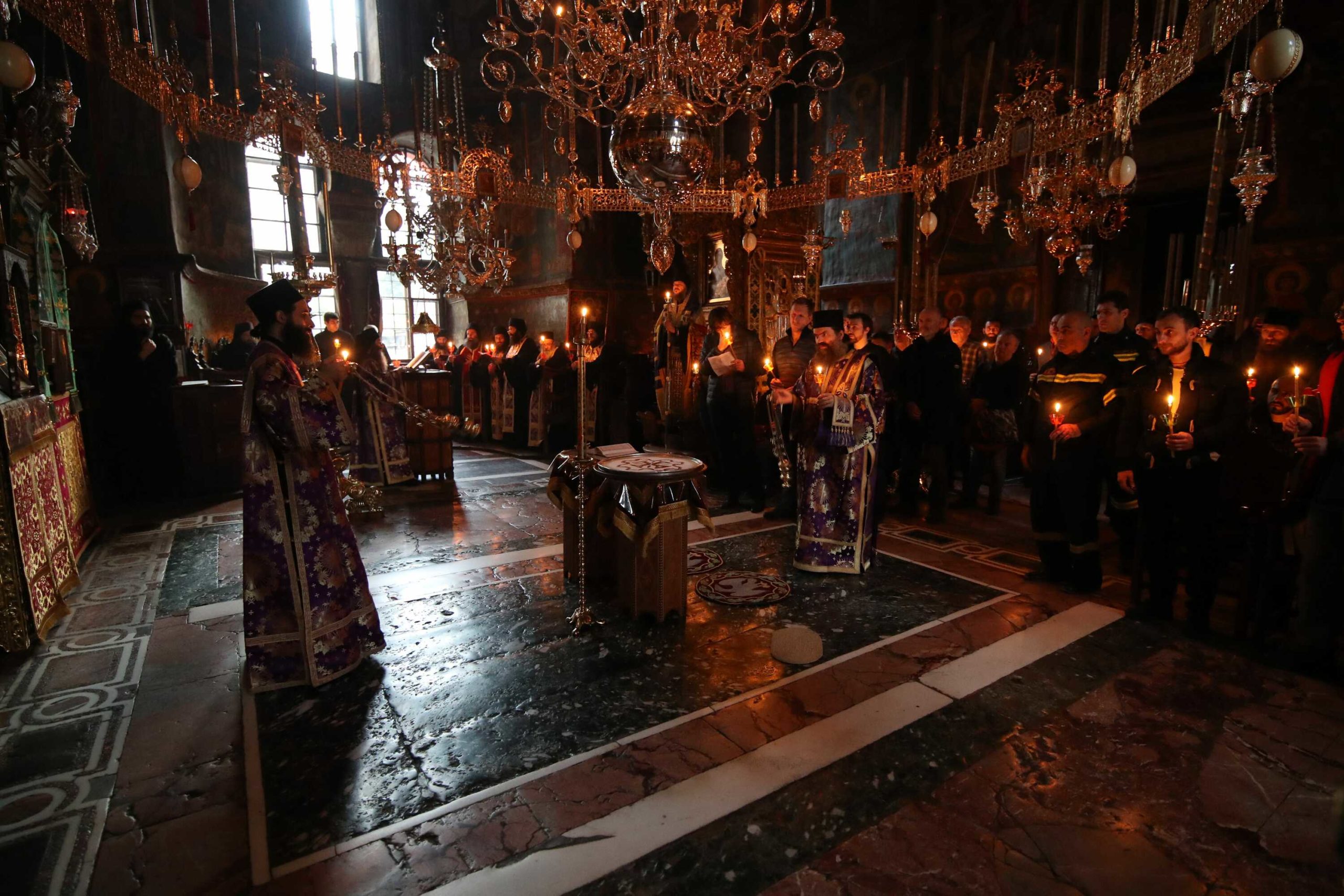
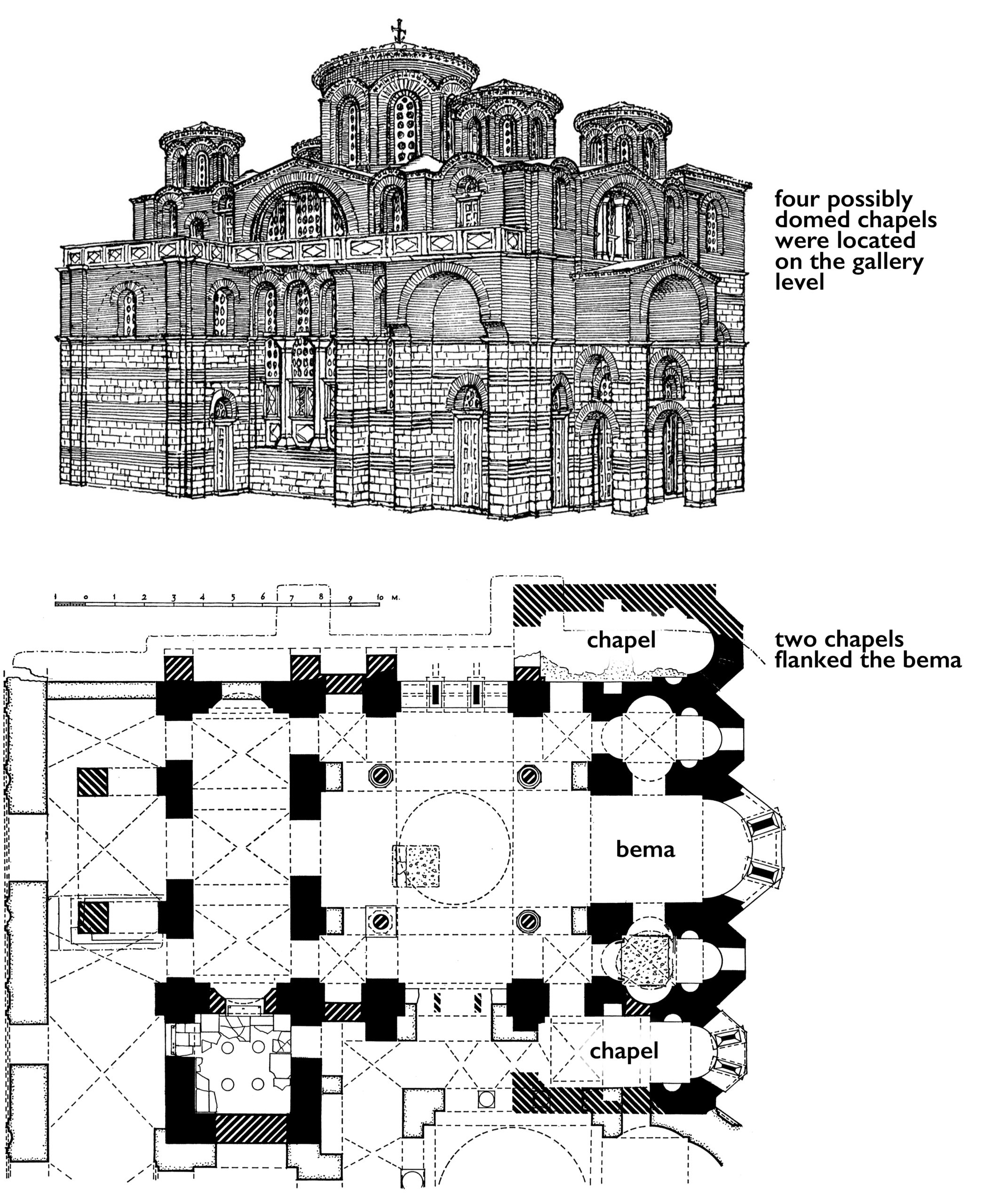
Greater complexity
Theotokos tou Libos, Constantinople
Annexed chapels and more complex plans appear regularly in the Middle Byzantine period. The monastic church of the Theotokos tou Libos in Constantinople, built c. 907 as a cross-in-square church similar in scale and detail to the Myrelaion, included six subsidiary chapels in its original design, with two flanking the bema and four tiny, possibly domed chapels on the gallery level. (Dedicated to the Virgin Mary — “Theotokos” literally means “God-bearer” — this monastery is also named for its founder, Constantine Lips, an aristocrat and military official.) The katholikon of Hosios Loukas has eight chapels, organized on two levels. These subsidiary spaces have been interpreted as settings for private devotions, or possibly private liturgies, or as primarily commemorative spaces, but they are clearly integrated into the overall design of the building. Often a single chapel is set to one side of the building, as at Sv. Nikola at Kuršumlija.
Additional Resources
Robert G. Ousterhout, Eastern Medieval Architecture: The Building Traditions of Byzantium and Neighboring Lands (Oxford: Oxford University Press, 2019)
